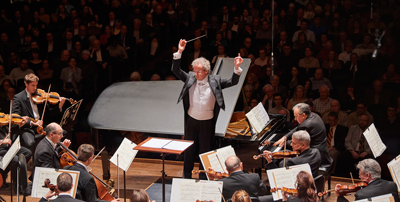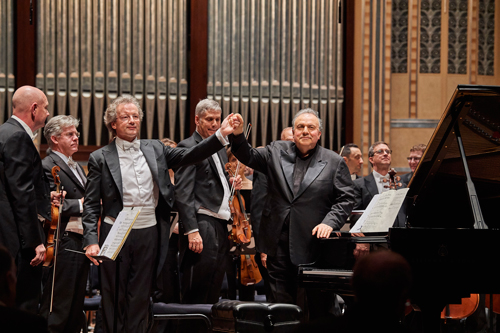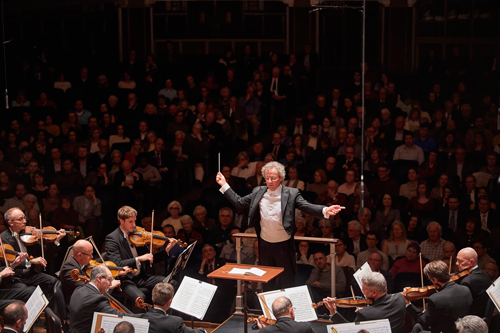by Daniel Hathaway

Widmann intended to write a four-movement concerto for Bronfman, but found himself obsessed with the material he conceived for the first movement. The result was a single-movement Trauermarsch (“Funeral March”) which unfolds fascinatingly during 25 minutes of complex, eventful music.
Drawing on the old theory of affects like many composers before him, Widmann sets the emotional tone for the first segment of the work using the drooping, two-note figure that German Baroque composers called the Seufzermotiv (and Italian madrigalists knew as the Sospiri or “sighing” gesture).
Widmann soon intensifies that idea and complicates the texture of the music, drawing on the resources of a very large orchestra with myriad percussion at the ready, and creating a palette of glittering sadness. A persistent dotted rhythm underlines the idea of a funeral procession.
Repeated chords in the orchestra against impassioned statements from the piano in its highest register lead to razzy fanfares, then to a passage of calm and a conversation between pianist and solo flute. A sudden outburst heralds general chaos in the orchestra from which the solo piano emerges to explore the low register of the instrument. The piece ends with soft valedictory notes from the contrabass clarinet.
But a blow-by-blow chronicle of events doesn’t do Trauermarsch justice. Subtle details (low-tuned double basses), effects more visual than audible (the caressing of harp strings with a metal bar), and exotic percussion (like the evanescent tones of a waterphone) all added to the visual and sonic landscape.
As in his Violin Concerto, performed here last year, Widmann likes to keep his soloist busy. Though rarely given the prominence of a conventional concerto soloist, Bronfman was part of every event, his hands constantly in motion from top to bottom of the keyboard. The audience was engaged and captivated, giving Bronfman and the Orchestra a long and enthusiastic ovation.

Violas and cellos marvelously set the tone for the first movement, which doesn’t take long to rise to an ecstatic tutti, then ebbs and flows amid wonderful sotto voce comments from the horns.
Tubist Yasuhito Sugiyama moved to stage right to join the Wagner instruments in the dark-toned introduction to the slow movement. Later, patient percussionists crowned a magnificent climax with the only cymbal crash and triangle trill in the 65-minute symphony (Bruckner calculated his high points astutely).
Bruckner’s scherzos are masterpieces of the form, and constant rhythmic and harmonic tension help the third movement of this symphony make a powerful statement out of what would normally be a joke. The lyrical middle section, played by the strings, was lovely.

The second long ovation of the evening included well-deserved stand-ups for the brass, but also for woodwind players who supplied ravishing solos in between Bruckner’s more monumental passages.
Photos by Roger Mastroianni.
Published on ClevelandClassical.com January 17, 2017.
Click here for a printable copy of this article



